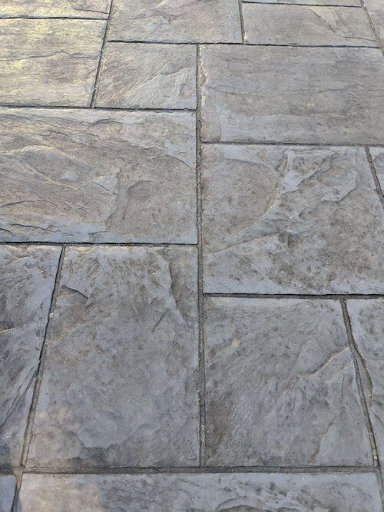Introduction:
Selecting the right concrete for your project, especially for pros in construction or driveway installations, can be challenging. This guide aims to simplify the choice between stamped and traditional concrete, breaking down key factors. it ensures relevance for construction professionals, offering insights that matter for driveway projects.
This easy-to-understand guide empowers decision-making, making it a valuable resource for those seeking optimal concrete solutions to their professional needs.
Looks That Catch the Eye:
Imagine concrete that can dress up as brick, stone, or tile – that’s stamped concrete! It adds a touch of sophistication to your space with its ability to mimic high-end materials.
On the other hand, traditional concrete keeps it straightforward, offering a clean and classic appearance. It may not have the decorative flair, but simplicity has its charm. So, it’s a choice between the eye-catching style of stamped concrete or the enduring appeal of plain and simple elegance with traditional concrete – each with its unique charm for your space.
Express Yourself with Design:
If you love personalization, stamped concrete is your canvas that allows for intricate patterns, textures, and a variety of colors, providing endless possibilities to express your unique style.
Going for a timeless and functional look? Traditional concrete might be your go-to. While it doesn’t offer the same design flexibility, its simplicity fits well in various settings. So, whether you want to show your creativity with stamped concrete or keep it classic and functional with traditional concrete, both options let you shape your space according to your taste and preferences. It’s all about choosing the style that speaks to you and makes your surroundings uniquely yours.
Built to Last:
When treated right, stamped concrete can withstand heavy foot traffic and diverse weather conditions, making it suitable for both indoor and outdoor applications. Proper installation and sealing are key to its durability.
Renowned for its smooth finish, traditional concrete is a reliable choice for structural elements such as foundations and driveways. It stands strong with minimal maintenance.
Balancing the Budget:
Admittedly, the initial cost of stamped concrete can be higher due to its decorative features. However, it serves as a cost-effective alternative to pricier materials like natural stone or pavers in the long run.
If you’re watching your budget closely, traditional concrete is generally more affordable upfront. It offers a practical solution without compromising on durability.
Maintenance Made Easy:
To keep stamped concrete looking its best, periodic resealing is recommended. Routine cleaning and addressing minor repairs will help preserve its decorative finish over time.
The beauty of traditional concrete lies in its low maintenance requirements. It’s a hassle-free option for those seeking durability without the need for constant attention.
Timing is Everything:
Patience is a virtue when it comes to stamped concrete. The installation process may take a bit longer due to the additional steps involved in creating patterns and textures. However, the personalized result often justifies the wait.
If you’re on a tight schedule, traditional concrete might be your ally. Known for its quicker installation process, it’s a practical choice for projects where time is of the essence while still delivering a durable and functional outcome. So, both the concrete options are good to go with the design project but for a faster installation, traditional concrete wins the game.
Environmental Friendliness:
For those with a green thumb, stamped concrete can be a sustainable choice. It often incorporates recycled materials, and its long lifespan reduces the need for frequent replacements, minimizing environmental impact.
While not as flashy in the eco-friendly department, traditional concrete is known for durability, meaning less waste over time. Choosing a reliable material that stands the test of time contributes to a more sustainable construction approach.
Temperature Tolerance:
If you live in an area with temperature extremes, stamped concrete can be a winner. Its ability to resist temperature fluctuations makes it suitable for both hot summers and chilly winters without compromising its integrity. Similarly, robust in handling temperature variations, traditional concrete provides a stable foundation in diverse climates. Its thermal mass properties contribute to energy efficiency, helping maintain comfortable indoor temperatures.
Safety and Aesthetics Blend:
Stamped Concrete takes the lead in safety and looks, boasting slip-resistant surfaces for security and an artistic touch for visual appeal. This makes it perfect for spaces that need both safety measures and a visually captivating atmosphere.
Meanwhile, Traditional Concrete brings stability with a classic look. It forms a secure foundation that not only ensures safety but also enhances the overall appearance of your property, providing a timeless and dependable charm that stands the test of time.
Long-Term Investment:
Stamped Concrete Acts as a durable and stylish investment, as its resistance to wear and tear means less frequent replacements, saving you money in the long run.
Traditional concrete stands as a lasting investment with its robust qualities, demanding minimal upkeep. This durability ensures longevity and structural stability, contributing to increased property value over time. Property owners benefit from reduced maintenance costs, and the material’s enduring nature enhances the overall appeal of the structure, making it an economically sound and aesthetically pleasing choice in construction.
Conclusion
If you have any idea with this easy guide, you’re now equipped to make an informed decision between stamped and traditional concrete for your project. Whether you’re drawn to the decorative charm of stamped concrete or the simplicity of traditional concrete, both options have their unique strengths to offer. Choose wisely, and watch your vision come to life in concrete reality.





